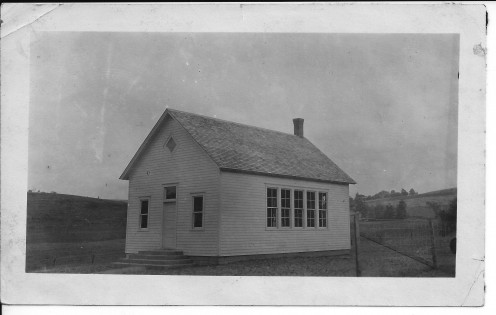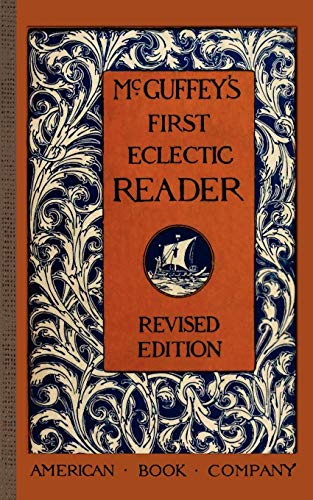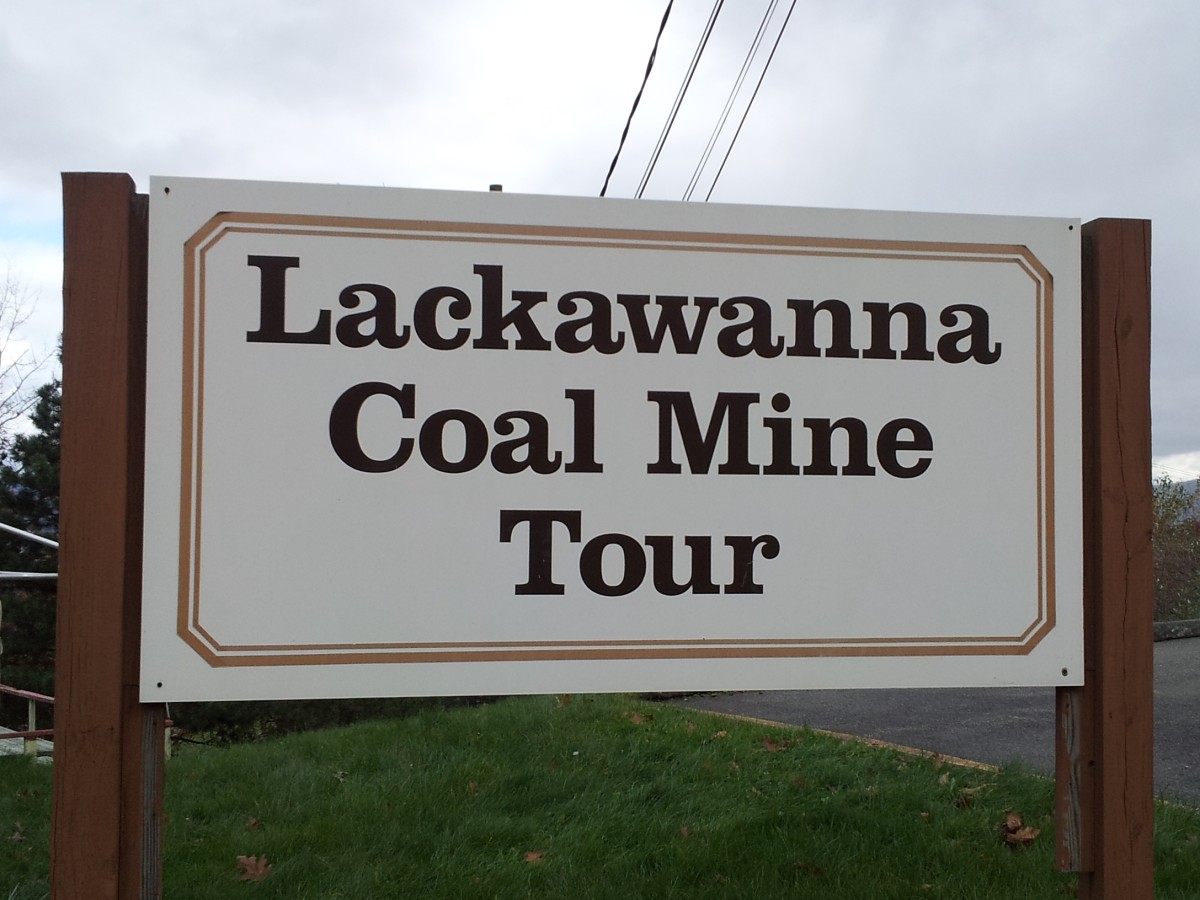Liam Sullivan in Scranton - LS1 - The Start of a New Life
A Missouri One Room School Building of the later Nineteenth Century

Introduction
Eighteen-year-old Liam Sullivan stood in front of a roomful of students for the first time as a teacher on the first day of the fall term in 1870 in Scranton, Missouri. There were 7 boys in three rows to his left, 7 girls in three rows to his right. This total of 14 students, ranging in age from 6 to 15 years of age, sat in anticipation of this new experience for each of them. How did he get here? What would come next?
Liam graduated from High School in St. Louis in the spring having taken the Normal Training program and earned his teaching certificate. Liam wanted to be a teacher. While his parents would have preferred for him to teach in the St. Louis area, when he became aware of the opportunity in Scranton, he saw it as the kind of challenge he really wanted to pursue. The Atlantic and Pacific (A&P) Railroad had finally managed to extend the railroad west of Rolla. This created a “community” they named Scranton (a railroad director was from Scranton, Pennsylvania, and won a coin flip). Ten miles west of Rolla, in Phelps County, the railroad had built a bridge across the Gasconade River and built the town of Jerome on the west side. Following the ridge line to the northwest, the railroad had been completed to the town of Dixon in Pulaski County and beyond. Normally, a stop for coal and water was established every 7 or 8 miles along the line, such was the case in Jerome. From Jerome to Dixon, along the line, was 10 miles. It was determined that a mid-point water stop was needed for the engines on the line, but not coal. It was a steep grade, though not hard enough to need extra engine support. The Scranton water stop was created at that mid-point, five miles west of Jerome, just inside the Phelps County line. With the construction crews moving on to the “end of the line” work, Scranton was left with four family-run businesses that hoped they could sustain and grow their “community.”
A school building had been constructed and the families had fourteen students among them of school age. They wanted to demonstrate their modernity by hiring a teacher to reflect a normal life in Scranton. Liam had responded to their call and they felt he was their best hope for their first fall term. They were anxious for the children to advance their education under these unusual conditions.
An Early McGuffey Reader Widely Used in the mid-Nineteenth Century

Getting Started
After introducing himself as Mr. Sullivan, Liam welcomed the students and talked briefly about his positive outlook for the semester and his appreciation to their parents for entrusting him with the opportunity to advance their educations. To establish his leadership and also to set discipline for the class, Liam set about rearranging the students with the youngest in front and the older students in the back. This also allowed him to be able to immediately recognize and name each student with each of them sitting according to his seating chart. James Collins, 6, and Augustus Jacobs, 7, were assigned to the front row on the boy’s side of the room.Matilda Perkins, 7, and Rachel Hermann, 8, were in the front row for the girls. In the second row for the boys, he placed Wyatt Collins, 8, along side Noah Jacobs, 9. For the girls, the second row was Polly Collins, 10, along with Adeline Perkins, 11. The back row had the following boys: Charles Hermann, 11, George W. Perkins, 13, and Oliver Collins, 14. For the girls, the back row was: Emily Collins, 12, Agnes Hermann, 14, and Sarah Perkins, 15. Agnes and Sarah were older than normal for the eighth grade, but their parents wanted them to be certified graduates of that grade at year end, and the teacher had agreed.
The parents had contributed their copies of the McGuffey readers for First through the Eighth Grade and they had already purchased additional copies so that two copies were available for each grade level. Mr. Sullivan distributed the books to the students. They also each had a personal slate and there was chalk on the tables in front of the students in each of the rows. He then assigned page numbers from the books for the students in the back two rows, starting with the oldest, to copy the first two lines of the page onto their slates. This would give him an opportunity to evaluate the writing level of each student on a first pass. He then set about working with the youngest four students to get them started on useful activities for the day.
In the back of the school room, actually just inside the front entrance, there was an anteroom on each side with benches, shelves and clothes hooks where the students stored their coats, lunch materials and anything else they might bring with them rather than bringing them into the school room proper. These were separated by boys and girls, of course, just like the benches inside. Since this first day was in the middle of September, it was still a nice day out. The children enjoyed their lunches outside and getting to play for a bit before returning inside for the second half of their first day.
Salvaged Lumber from Prior Construction Projects

A Residence was Provided for the New Teacher
As the railroad construction through the area progressed, there may have been several hundred workers at any one time. Temporary housing was set up with wood frames and tarps for most of the them. A few managed to build shanties if they expected to be around a little longer than others. As the bulk of the workers moved on, much of these flimsy bits of construction were left behind - they took the tarps, of course. During the spring and summer, members of the four families who had decided to stay, worked as they could at salvaging what lumber they could, knowing there would be value to them in the future. This is where the material for the school mostly had come from.
Also, three or four of the shanties were worth repairing and used for various purposes. One was prepared as a residence for the teacher to be brought to town. The men and women of the town talked about whether the teacher should be expected to live in one of these or should stay with one of the families. They all chipped in to fix up this one building into a decent cabin. Liam was very happy to see that it was there when he arrived. He took one evening meal a week with each of the four families. Otherwise, he was able to make do on his own. He liked the freedom this afforded him, in spite of what many might have seen as an inconvenience.
Liam was happy that he was not scheduled at any of the family homes for dinner that night of the first class. He sorely needed the time to himself to unwind and relax after a hectic day, which he had survived in otherwise good shape. None of the students had seriously challenged him, though he realized that was likely to change. He felt they had made good progress for a first day, and began to see where special attention might be required. Agnes and Sarah, the older girls, seemed to be a soothing influence on the class, which he found both to be both interesting and helpful. He would be watching to see if that continued.
From the Author
This is the first episode of a new, free-standing series of stories but it will be shown to have ties to The Homeplace Saga series of historical fiction, family saga stories. Liam’s mother was the former Ruth Weston, older sister of Levi Weston. Liam’s father, John Sullivan, was a younger brother of Jourdan Sullivan, who with his wife Martha settled on a farm in the west valley of what became Oak Creek Township in 1852. Both given and surnames in these stories can be found in the Phelps County, Missouri, 1870 U.S. Census though they are each used here in totally fictionalized ways. Related historical events are portrayed as accurately as possible in the context of this historical fiction, family saga series of stories.
Part of The Homeplace Saga Series of Stories
- "The Homeplace Saga" Blog
The home blog for "The Homeplace Saga" series of historical fiction family saga stories set in the southern Missouri Ozarks. All updates of the series are mentioned on the blog, regardless of platform.








